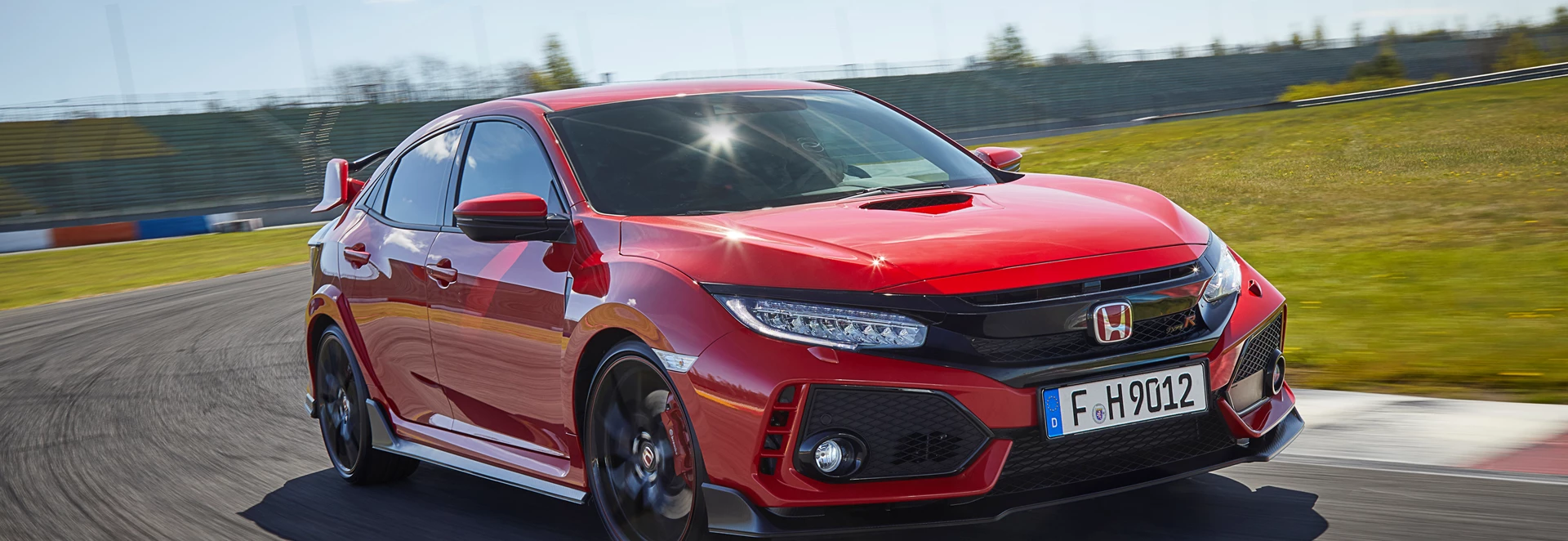The red Honda badge is one of the most revered emblems in the automotive industry – and the Civic hatchback has been integral to its success.
Now in its fifth iteration, the FK8 Civic Type R brings with it a wealth of changes that Honda hopes will help narrow the gap between its Ford Focus RS and Volkswagen Golf R competition.
So, has much changed for the new Type R then? Well, it’s still FWD and it uses the same 2.0-litre petrol engine. Delve in deeper, however, and you will see a body that boasts enhanced rigidity of 38 per cent, a new rear suspension set-up, tweaked gearbox, a new rev-matching feature, a new driving mode, a new top speed and more power. You even sit lower to the ground in the driver’s seat.
And if you want proof of the effectiveness of these changes, the FK8 Type R has beaten the previous FK2 Type R’s Nürburgring lap time by seven seconds – making it the fastest FWD production car around the circuit. How’s that for proof?
Of course, the design of the new Type R is as maverick as ever before. As well as being lower, longer and wider than the previous model, everywhere you look, it has some sort of aerodynamic doodad to mitigate drag and produce downforce – and it actually produces its own positive downforce.
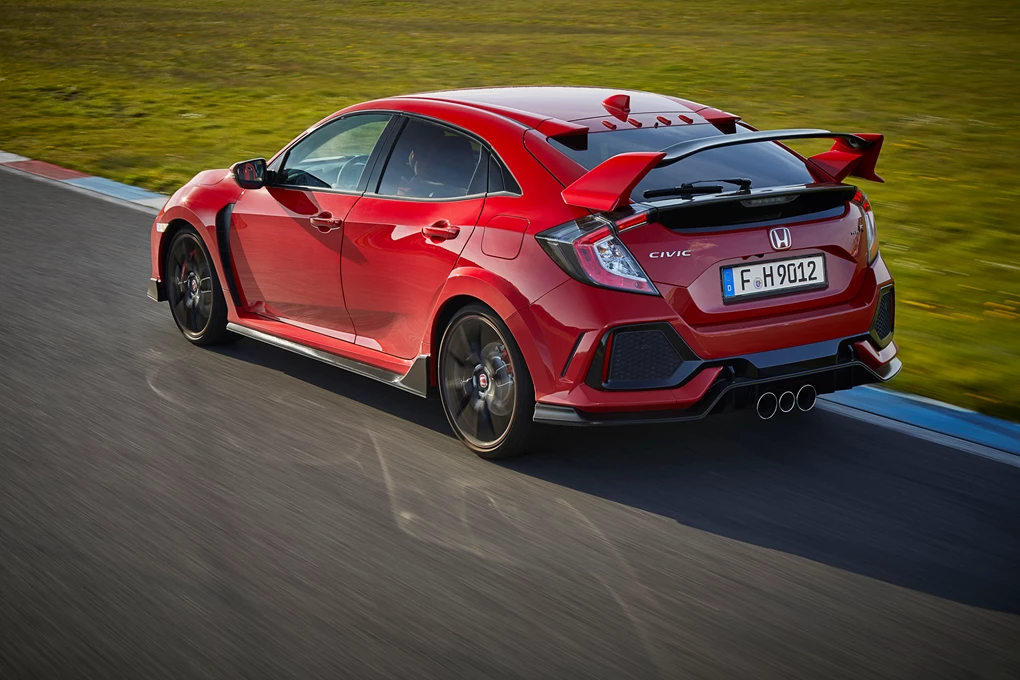
Although under the bonnet of the new FK8 model is the same 2.0-litre VTEC turbo petrol as the previous-generation Type R there’s been a bump up in power by 10bhp, with its total power now standing at 316bhp. Honda has achieved this new max power output thanks to some enhanced engine and exhaust cooling.
Thankfully, Honda has stuck with its awesome, bolt-action six-speed manual gearbox too, which has had its gear ratios reduced by seven per cent.
Does that mean the 2.0-litre VTEC is quicker to 62mph from a standing start? No. It still takes 5.7 seconds. More torque then? Nope, there’s still 400Nm of it. It does, however, boast a new top speed of 169mph – which we managed to pry out of it on the German Autobahn. And the new Type R feels extremely at ease at those speeds, which is reassuring, even if you don’t live in Germany or frequently hone your skills on a racetrack.
The 2.0-litre VTEC turbo remains as vigilant as ever too, with smooth and instantaneous power delivery. Yes, there is a smidge of turbo lag, but if you’re after speed and performance, you’ll likely have the rev counter bounced well past the 2,500rpm flat zone.
The other big change with the new Type R – arguably the biggest of all – is its fully-independent multi-link rear suspension. Whereas the rear suspension of the FK2 Type R would shudder, quite aggressively, over lumps and bumps in the road, the new multi-link set-up allows for each rear wheel to contort to the changing conditions of the road. Not only does this make the Type R easier to live with day-to-day, especially if you live on a cobbled street, it also adds to the car’s finesse in the corners, both on and off track.
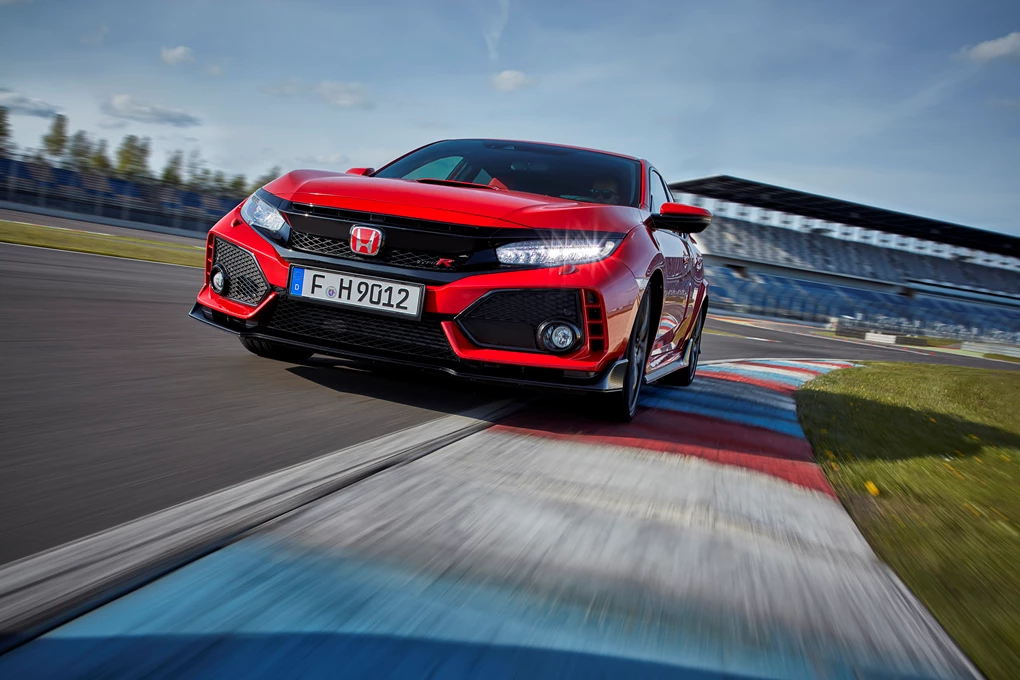
Along with its mechanical limited slip differential which assists the front wheels when cornering hard, the enhanced body rigidity and the new multi-link rear suspension allows the Type R to more accurately read the road when taking on bends, clawing its way around an apex with zero fuss. Also, if you do happen to mount the rumble strip when cornering, you’re no longer met with such an aggressive barrage of bullets up your spine. And even with this new multi-link rear suspension, the Type R avoids leaning in the corners, staying flat from entry to exit.
But does it feel wanting in the grip department as it’s only FWD? Absolutely not, at least not on a dry racetrack. The Type R offers a phenomenal amount of stickiness on track, and the new rear suspension has done wonders for its ability to read changing road and track conditions.
The Type R undoubtedly feels more at home in the bends than anywhere else, and its steering clearly reflects this. Drive around town and the steering is sharp, accurate and fairly light, but there isn’t much in the way of feedback. Alternatively, pick-up speed on a racetrack and dive into a bend and the steering is just as sharp, but it weights up and offers greater levels of feel. The variable rate set-up of the steering also means that the more you steer, the less you have to steer, so taking on hairpins won’t have you tangling your arms up.
There are now three driving modes to choose from, with Sport being the default mode, bookended by Comfort and the existing +R mode. Comfort is the most significant addition, as it allows the Type R to evolve into more of a normal hatchback with the adaptive dampers giving softer ride quality. On the other end of the spectrum, +R stiffens the ride. Sport strikes a nice balance between the two and you’ll most likely find yourself leaving the switch in Sport mode most of the time.
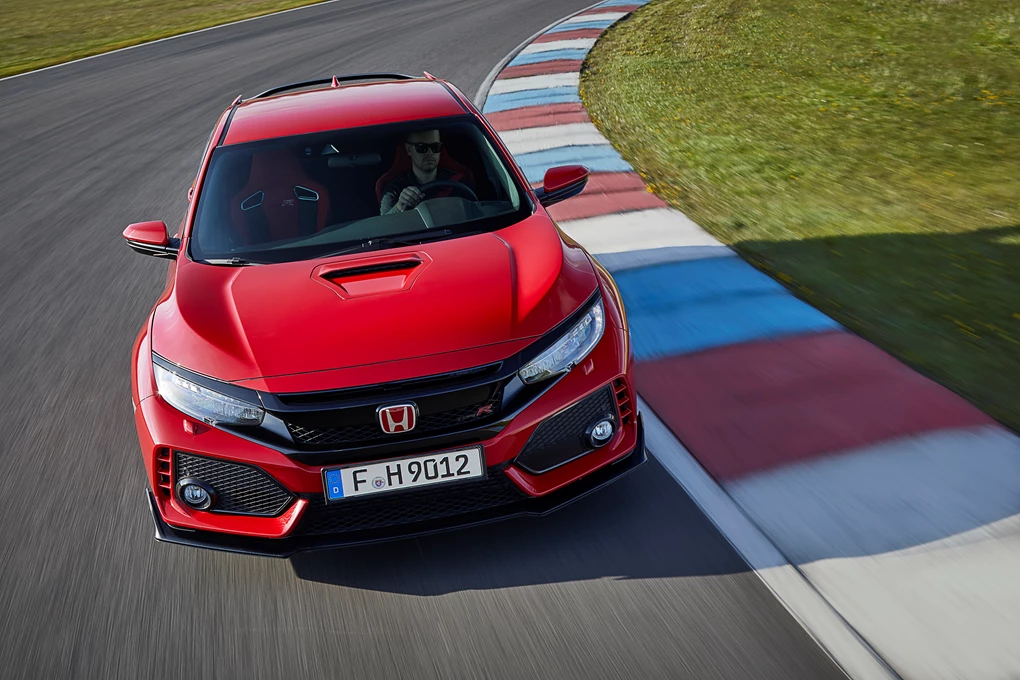
Although Comfort is great for town driving, you’ve really got to be in +R mode to properly appreciate the Type R’s athletic abilities. As well as the adaptive dampers giving a firmer ride, +R mode makes for weightier steering and a sharpened throttle response. It also relaxes the Vehicle Stability Assist system just enough to allow for more back-out driving.
This type of driving is further enhanced by the new rev-matching auto-blip system. Effectively simulating heel-toe shifting, this feature bounces the revs higher on downshifts to allow for more effective exits from bends. If you are a purist and prefer to do it the old-fashioned way then you can switch this off. It’s still a great feature, though it is aimed at those that likely associate ‘heel-toe’ with ballroom dancing.
But what good is going fast around a racetrack if you can’t stop yourself? Well, Honda delivers once again with Brembo brakes, of which are slightly larger than on the previous Type R. These Brembo brakes are as stern as a headteacher with a cane, giving parachute-like braking force on tap. These also sit alongside slightly wider Continental tyres.
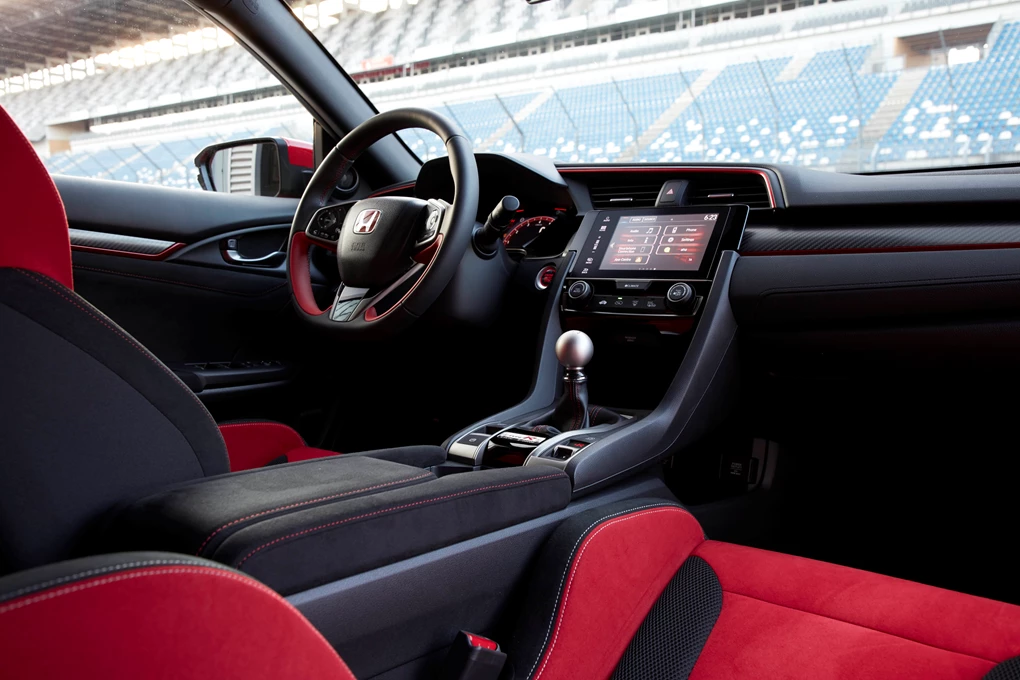
The Type R has maintained its two-model line-up, with the standard Type R and the GT model. For an extra £2,000, the GT model adds the likes of an integrated Garmin sat-nav, wireless phone charging, dual-zone climate control and enhanced safety kit to include blind spot monitoring, LED front fog lights and cross traffic monitor. The only thing distinguishing the two models from the outside is a red strip that circles the GT model along its bumpers and side skirts.
The overall quality in the cabin has improved slightly, with more up-market materials used throughout. The biggest improvement is its new seating position and dashboard design. Like the new standard Civic, the dashboard is no longer split into two huge sections, as the speedometer is integrated behind the steering wheel. The bucket seats have also been slightly improved, offering additional support and comfort. The Honda CONNECT system remains a bit of a mixed bag, with a logical layout but a rather dated look and feel.
Price wise, the new changes to the Type R equate to an additional cost of £1,000, with the standard Type R costing £30,995 and the Type R GT coming out at £32,995. Regardless of price though, for some, the fact that the Type R isn’t AWD will be enough to look elsewhere – but you’d be foolish to think that the Type R lacks chops.
It may not have the same tact on wet tarmac as something like the Ford Focus RS, but the Type R is a seriously capable machine. Some may argue that the overt firmness to the ride of the FK2 was one of the things that defined the Type R’s character, but we think the new set-up is a definite improvement. A hot hatch is supposed to be a race car for the road, not just for the track.
